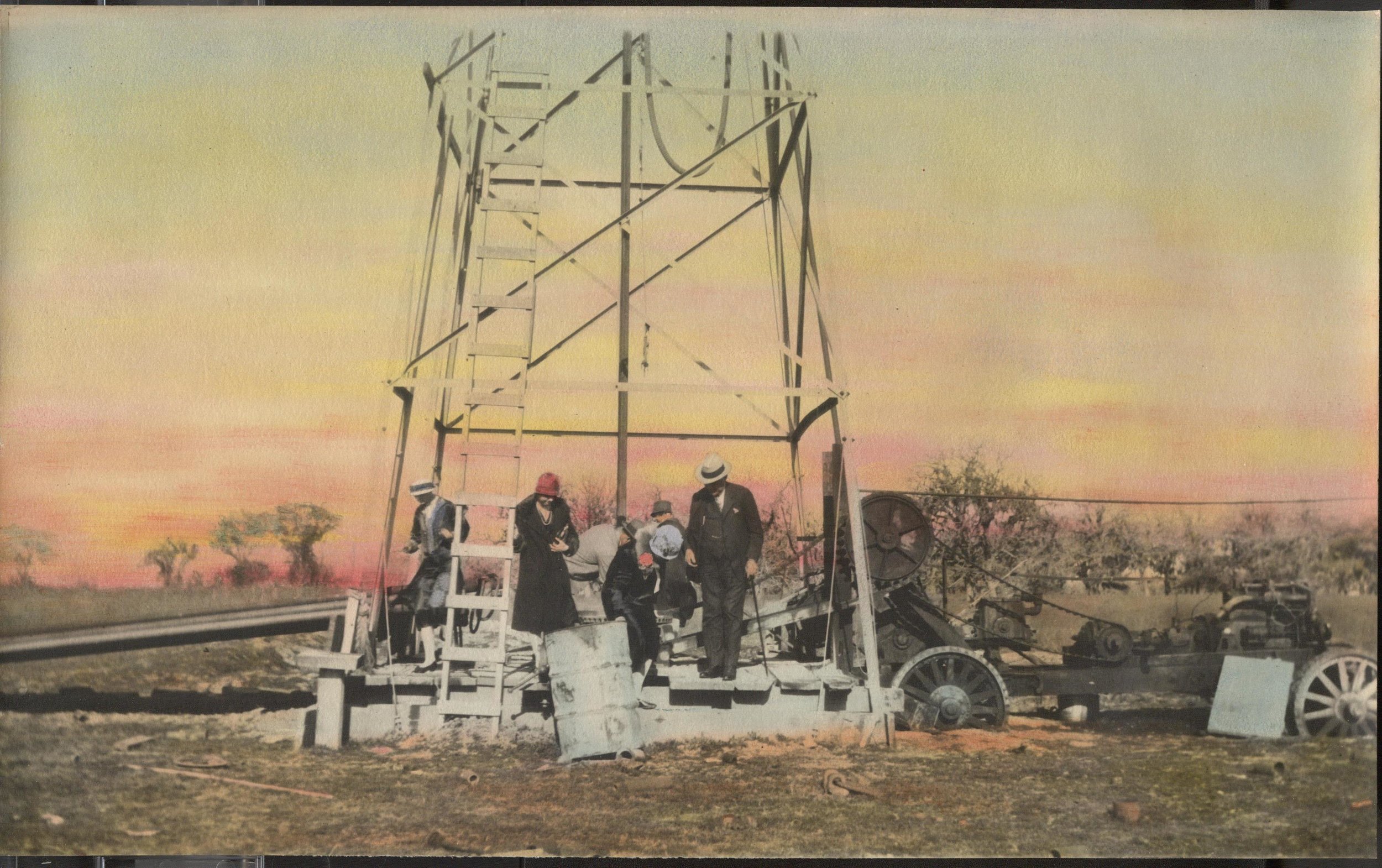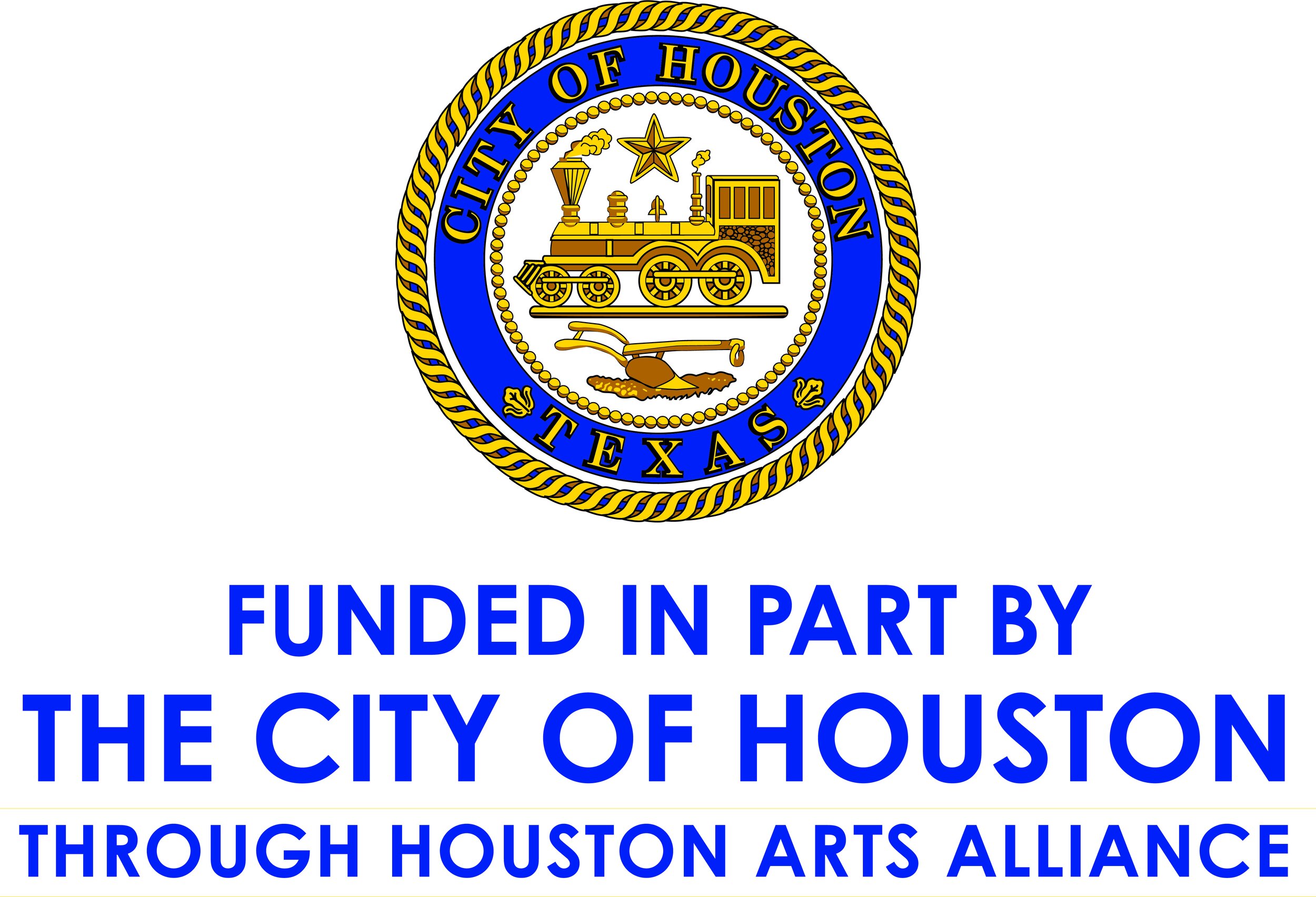Photographing the Life of a Houston Wildcatter
On January 10, 1901, the Lucas gusher ushered in the Spindletop oil boom that changed the course of the world’s history. It wasn’t the first successful well drilled in the world or even in Texas, but it represents the beginning of an industry that today still drives the economy of Texas and Houston. Many well-known companies, such as Humble Oil, developed as a result of this early twentieth century oil boom, but many more independent men were also successfully bringing in gushers throughout Texas. One of those men was Henry Staiti.
As a wildcatter or independent oilman, Henry (on the left) brought in some of the first wells in Humble in 1904 & 1905
Henry was born in 1876 in Marshall, Texas to parents Santo Staiti, an Italian immigrant, and Mary Jane Deal Staiti of Tennessee. He received his education in geology at Marshall College and began oil prospecting work in McLennan County. Just before his career took off, Henry married Odelia Reisner of Waco in 1901. The couple then moved to Beaumont just after the Lucas gusher made headlines. In 1905, Henry Staiti moved his family and base of operations for his oil business to Houston.
Wildcatters like Henry Staiti who settled into stable business circles tended to endure in the high-risk industry. The men at Spindletop who did not maintain partnerships rarely survived as significant players. The major reason is that they failed to spread the high risks of exploration and production over enough ventures. As evidenced in numerous letters and oil industry publications, Staiti had many partnerships and operated under several companies including Texas Exploration Company, Prairie Oil Corporation, Pay Streak Oil, Valley Oil Corporation, Houston Petroleum Company, Pathfinder Oil Corporation, Powhatten Oil and Houston-Oklahoma Oil.
Circa 1930 -One of the fields in which Henry had good success in bringing in wells was Raccoon Bend. This was a joint venture with Henry’s Valley Oil Corp. and Humble Oil and Refining Company.
Not only was he a successful oilman, but Staiti documented his life in hundreds of photographs. The images capture the lifestyle of a prosperous young Houston oil family making the most of this nascent industry. They also highlight the methodologies used in the early days by those in the industry to search for, extract, and store oil. Snapshots and professional photos taken on their many trips to visit to the oil fields show the men and women of the family in their 1920s fashions standing feet away from pools of oil and derricks in the background.
While he and Odelia had no children of their own, their grand house in the Westmoreland Addition was frequently home to their extended family. Three of Henry's brothers - Grover, Charles and Albert - lived at various intervals with Henry and worked with him in the oil business. Odelia's five sisters were also frequent visitors for periods of long duration. Beautiful photos of their extensive gardens and interior views of their home illustrate the lifestyle afforded to the Staitis as a result of Henry’s success in the burgeoning oil industry.
After nearly three decades as a successful wildcatter, Henry died on October 2, 1933 of a heart attack in his office in the Houston Chronicle building. The Staitis’ grand home is preserved and maintained by The Heritage Society as a historic house museum in Sam Houston Park.










